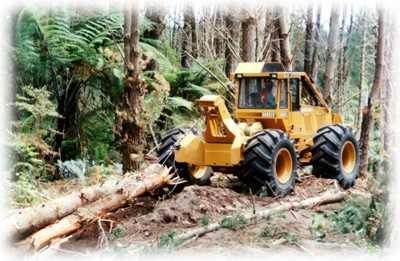




















LivingWind wrote:
Pretty pertinent topic. Refer here: http://youtu.be/m6i6u5n4HRk
This is a wonderful segment!
Enjoy -
















 How is that even possible?
How is that even possible? 
Idle dreamer













kane Abbott wrote:
i m not sure how that is possible....hmmm ,fuji water claims to be off setting more carbon then it produces, by planting rainforest but these figures are based a futuristic estimates that they have not yet reached. In other words they claim to have planted a whole rainforest but they have only planted a small part , and still have a carbon neutral label.

Idle dreamer













Sounds good to me.Paleo Gardener wrote:
So this means... food forest with chop n' drop is the ideal system! Trees AND really deep soil




H Ludi Tyler wrote:
How is it a wood pellet which is manufactured and shipped to a foreign land can be "carbon negative"? It claims to have sequestered more carbon than it contains and is produced in its manufacture, shipping and use?How is that even possible?

















LivingWind wrote:
Yeah, one big gotdamn racket I tell ya. I really like the idea of collectively greening the desert in western Australia to combat the rest of the world's doing... It would take years and years, and much petrol power to do it, but it sure is an intriguing endeavor.




pubwvj wrote:
What non-loggers fail to understand on forestry is that the low grade wood pays over the course of decades to manage the forests so that high grade wood can be harvested later. Making paper, wood chips, pellets all uses the low grade wood. The even smaller particles are left in the forest floor. The action of the skidders and dragging logs stirs up the forest floor litter which is a good thing as it promotes growth. All of this is assuming a sustainable long term forest farm. Farming is the ultimate in long term cropping. We do sustainable forestry as part of our farm.
The best carbon sequestering for wood happens when the logs are made into furniture, lumber for home building and other durable goods. That keeps the carbon out of the cycle longer - decades to centuries.
I have read that our forests are soaking up 1.4 tons to 2.6 tons of carbon a year. They also take in a lot of dust, smog and other pollutants produced by the cities as well as providing beautiful views and attracting the tourists during fall foliage season.
All that said, the fields being grazed by livestock are even better at soaking up carbon AND nitrogen. We apply no fertilizers yet our fields are gradually improving in fertility over the years because we carefully plant legumes and the livestock are spreading manure and urine. Inputs come in the form of the whey and other 'waste products' we get to feed our livestock. We buy and feed no grains and use virtually no petroleum - about 100 hours a year on the tractor which is fairly small.
The reason pastures do better when grazed is that the grazing knocks the plants back to a higher growth rate stage instead of letting them go into the dormant seed stage so early. Careful management of the fields through manged intensive rotational grazing makes this work very well.
Despite the fact that the fields can sequester carbon faster I would not want to have just fields. The mix of forests and fields is idea. It is along the margins where the greatest biodiversity occurs.
Cheers
-Walter
Sugar Mountain Farm
Pastured Pigs, Sheep & Kids
in the mountains of Vermont
Read about our on-farm butcher shop project:
http://SugarMtnFarm.com/butchershop
http://SugarMtnFarm.com/csa




H Ludi Tyler wrote:
How is it a wood pellet which is manufactured and shipped to a foreign land can be "carbon negative"? It claims to have sequestered more carbon than it contains and is produced in its manufacture, shipping and use?How is that even possible?




















Success has a Thousand Fathers , Failure is an Orphan
LOOK AT THE " SIMILAR THREADS " BELOW !

|
I guess everyone has an angle. Fine, what do you want? Just know that you cannot have this tiny ad:
The new kickstarter is now live!
https://www.kickstarter.com/projects/paulwheaton/garden-cards
|





